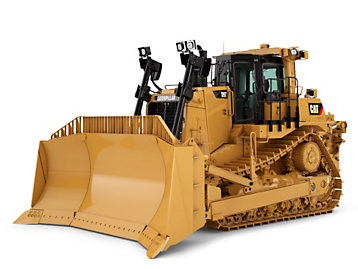By Craig E. Cutting which is a Construction Technology Application Consultant for Caterpillar Inc. (Guest Post)
The amount of data that construction machines produce due to advances in technology can be overwhelming for fleet managers who don’t have the tools in place to analyze it. Hundreds of onboard sensors and processors spit out massive amounts of data, and if you don’t have your operation streamlined, critical data points can get lost or simply overlooked. Data is wirelessly transmitted from your machines communicating information such as the location, status, fuel consumption and idle time of your equipment. Viewing this real-time data, project managers can make timely, fact-based decisions to boost productivity and reduce costs.
Cat LINK, a part of Cat Connect Technology, includes two key components— Cat® Product LinkTM and VisionLink®. Product Link is the hardware component of the technology and VisionLink is the software. Product Link grabs data from machine sensors and control systems and transmits it to VisionLink, which lets you view the data on any web-enabled device and use it to make quick, informed business decisions.
The benefits of using technology like Cat LINK stretch across all your business operations, but some of the quick highlights include:
- Controlling your fuel costs
Fuel consumption information is some of the most valuable information you can collect and use. Some industry experts say it’s not unusual for idle time to represent as much as 50 percent of total running time. Tracking and reducing idle time can have an immediate payback in reduced fuel costs.
If fuel consumption goes up suddenly—and your operator’s task hasn’t changed—it’s a signal that something else needs attention. Here are just some of the problems fuel data can help you uncover before they result in unwanted maintenance or repairs and increased operating costs:
- Excessive idle time
- Dirty fuel injectors
- Plugged air filters
- Contaminated fuel filters
- Defective sensors
- Faulty Engine Control Module
- Worn piston rings or leaky valves
- Slipping clutch or transmission
- Improper lube oil viscosity
- Undersized machine, bucket or work tool
- Low tire pressure or worn tires
- Aggressive or untrained operator
- Increasing utilization by studying when equipment is not being used
It’s hard to see patterns when you have multiple worksites or equipment working in different locations. With the data in front of you, you can look for alternative uses of equipment—any other function it could serve to generate revenue. Your information may reveal that trucks sit idling too long, burning fuel just to be loaded. By analyzing the data you may find enough idle time exists that you can park one of the trucks. This eliminates the fuel cost of that truck and makes cycle times more efficient for the remaining trucks. Another quick win idea would be using your trucks to contract haul during non-working periods.
- Using data to manage maintenance intervals
Analyzing your data can help you increase the efficiency and cost effectiveness of your maintenance schedules. It may surprise you how long you can effectively stretch maintenance intervals, saving time and money.
- Creating a fast start team
The information you gather from your machines has the ability to positively impact many areas of your worksites from utilization and uptime to operating costs and billing. Using a cross-functional team to review this information clarifies analyses and recommendations, which can’t help but result in better decisions. It also means that any hurdles can be overcome by the team and not sit completely with a single person.
Virtual Site Solutions, a joint venture between Caterpillar and Trimble, is also in the midst of updating VisionLink throughout 2016, making it faster and easier to use, especially with a smartphone or tablet. Some of the improvements users can expect to see soon include:
An even better mobile experience. Get ready for quick load times, uncluttered screens, easy-to-read content, good-sized buttons and simple navigation. You’ll have a great user experience whether you’re logging in with a phone, tablet, notebook or desktop.
Task-based apps. We’re breaking VisionLink down into smaller applications to better align with your everyday tasks. This will make the software easier to use and faster to update.
Turn down the fire hose. Drowning in data? You’ll have the option to reduce the amount of information you see. So if you only need fuel burn and machine location data to do your job, that’s what you’ll get. Someone else may need idle time and run time info, or hours to the next PM. The point is, we’re making it easy to access the data you actually need to do your job; nothing more, nothing less.
You’re in control, but we can help. Lots of people want to configure this software themselves, so we’re making it easy to do that. But if you’re not comfortable monkeying with VisionLink, start with the default settings. If they’re not right for you, your dealer can help with changes.
Simple dashboard. Everybody loves a dashboard – one convenient place to get a quick look at the key performance indicators you want to monitor. You’ll appreciate the new dashboard in VisionLink. And as you might expect, it will be easy for you to set things up exactly the way you want them.
At the end of the day, asset technologies are beneficial because they are designed to help operators solve issues and work more efficiently to minimize service costs and increase uptime. Having the data is important, but utilizing it correctly is what really makes the difference. Technologies like Cat LINK help you do more work at a lower total cost so you can build an even stronger business.
Guest Post
By Craig E. Cutting
Construction Technology Applications Consultant

